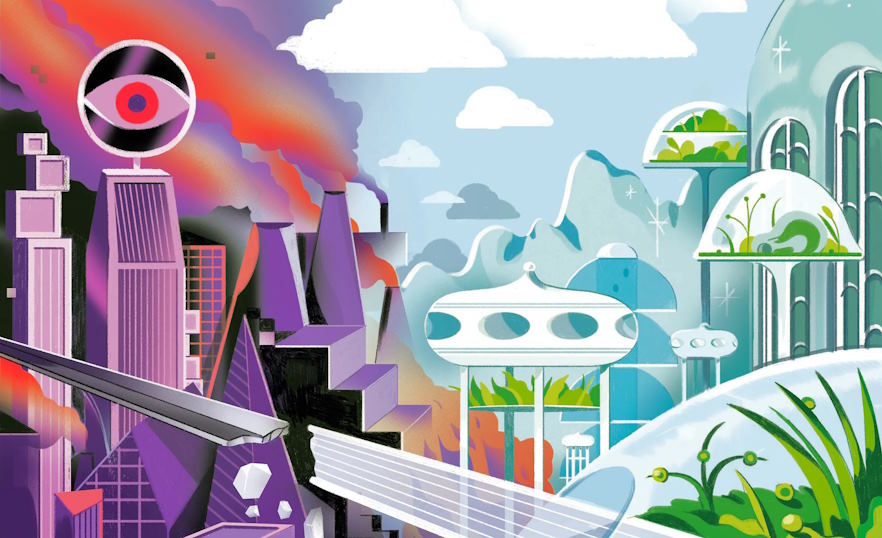Continuing from ancient philosophical dialogues to contemporary digital masterpieces, the fascination with utopia and dystopia persists as an enduring theme in human expression. At its core lies a fundamental inquiry into the nature of human existence, our capacity for creation and destruction, and the myriad forces shaping our collective destiny. As we stand on the precipice of an uncertain future, the allure of utopian ideals beckons us with promises of harmony, progress, and fulfillment, while the specter of dystopian nightmares warns of chaos, oppression, and despair. Through the artistic lens, we confront these existential questions with imagination unbounded by the constraints of reality, inviting contemplation, critique, and perhaps even revelation. Join us as we embark on a journey through the realms of utopia and dystopia, where the boundaries between dreams and nightmares blur, and the echoes of our hopes and fears reverberate across time and space.
Utopian Visions in Ar
Characteristics of utopian art:
Utopian art is characterized by its portrayal of idealized societies or worlds, where harmony, progress, and fulfillment prevail. These artworks often depict idyllic landscapes, futuristic cities, or communities where people coexist in peace and prosperity. Visually, utopian art tends to employ bright colors, clean lines, and symmetrical compositions, reflecting the order and tranquility of the envisioned utopia.
Themes commonly explored in utopian artworks:
Utopian artworks frequently explore themes such as social equality, environmental sustainability, technological advancement, and spiritual enlightenment. They offer visions of societies where wealth is shared equitably, conflicts are resolved peacefully, and humanity lives in harmony with nature and technology. Concepts like utopian architecture, communal living, and utopian education systems are often depicted, emphasizing the importance of collective well-being and cooperation.

Dystopian Depictions in Art
Characteristics of dystopian art:
Dystopian art is marked by its portrayal of nightmarish societies or futures plagued by oppression, decay, and despair. These artworks often feature dark, desolate landscapes, oppressive architecture, and ominous symbols of control. The visual aesthetic of dystopian art typically includes muted colors, jagged lines, and chaotic compositions, evoking feelings of unease and foreboding.
Themes commonly explored in dystopian artworks:
Dystopian artworks frequently explore themes such as totalitarianism, surveillance, environmental degradation, and the dehumanizing effects of technology. They offer cautionary tales about the consequences of unchecked power, social inequality, and the erosion of individual freedoms. Concepts like mass surveillance, corporate dominance, and environmental collapse are recurring motifs, reflecting contemporary anxieties and societal critiques.

The Intersection of Utopia and Dystopia
Exploration of artworks that blur the lines between utopia and dystopia:
Artworks that blur the lines between utopia and dystopia often challenge viewers to question the nature of societal ideals and the complexities of human existence. These pieces often present worlds where elements of both utopia and dystopia coexist, creating a nuanced and thought-provoking narrative. They invite audiences to contemplate the inherent contradictions and ambiguities within utopian and dystopian visions, highlighting the inherent imperfections of any societal construct.
Complexity of envisioning future societies:
Envisioning future societies is a complex endeavor that requires grappling with a myriad of social, political, and technological factors. While utopian visions offer glimpses of idealized worlds, dystopian depictions serve as cautionary tales about the dangers of unchecked power and societal decay. However, the reality often lies somewhere in between, with shades of both utopia and dystopia shaping our collective destiny. The complexity of envisioning future societies reminds us of the need for critical thinking and ethical considerations in shaping the world of tomorrow.


